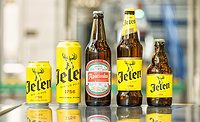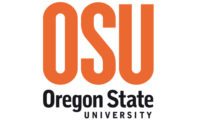Olymel had been cooking bacon in linear convection ovens, but as consumer demand rose, the necessary volume could not be achieved. The company considered purchasing a linear microwave oven, which some processors use to produce higher volumes of bacon. However, Olymel knew this system not only would require a sizable capital investment, it would consume more space and energy, and had some drawbacks in terms of the finished products’ taste and appearance.
These considerations encouraged Olymel to look beyond the linear microwave oven to something more economical. It purchased a spiral convection oven from Unitherm Food Systems to cook bacon bits, pizza toppings and flaked bacon. “Taste and appearance were deciding factors in the purchase of our spiral oven. Both are important to the people who purchase our products,” says Martin Croteau, plant manager at Olymel.
Spiral ovens convey food upward via a continuous conveyor belt traveling in multiple circular tiers within a single oven enclosure. As the bacon products cycle upward through the oven, fat is rendered from the ascending meat and is dispersed onto the bacon on the lower belt tiers. Thus, the bacon is basted and cooked in its own juices, resulting in a more homemade look, taste and smell. In comparison, bacon cooked in microwave ovens can appear flat and dull in color.
Another determining factor in Olymel’s decision to purchase the spiral oven was its smaller footprint. Unitherm’s spiral oven is a 12.5- x 14.5- x 11.8-ft. unit that has up to 150 ft. of belt. Because of the spiraled configuration, the oven maximizes the amount of product that can be cooked within its footprint.
To handle greater volumes in a linear microwave oven, the length of the oven would have to be extended, increasing the plant area occupied by the unit. But a spiral oven’s capacity and throughput can be increased by simply adding more belt footage. While this makes the equipment somewhat taller, the advantage of a smaller footprint is retained.
The spiral oven is also more versatile than most linear ovens because it can roast, steam, bake, broil or pasteurize a wide range of ready-to-eat or frozen food products. Additionally, when it is set to temperatures that eliminate bacteria, and with its clean-in-place system, the oven creates a safe cooking environment.
Available in electric or gas models, spiral ovens consume less energy than linear microwaves and other cooking equipment. Plus, they have lower labor costs.
“The spiral oven replaced two linear electric belt grills, so there was an immediate savings in electrical energy, labor and space,” says Croteau. “It is a compact piece of equipment and requires fewer personnel to produce the same output.”
With a spiral oven running on natural gas, the cost is roughly one-third compared to that of a linear microwave oven that uses electricity.
For more information: Adam Cowherd, 918-367-0197, adamc@unithermfoodsystems.com, www.unithermfoodsystems.com.





